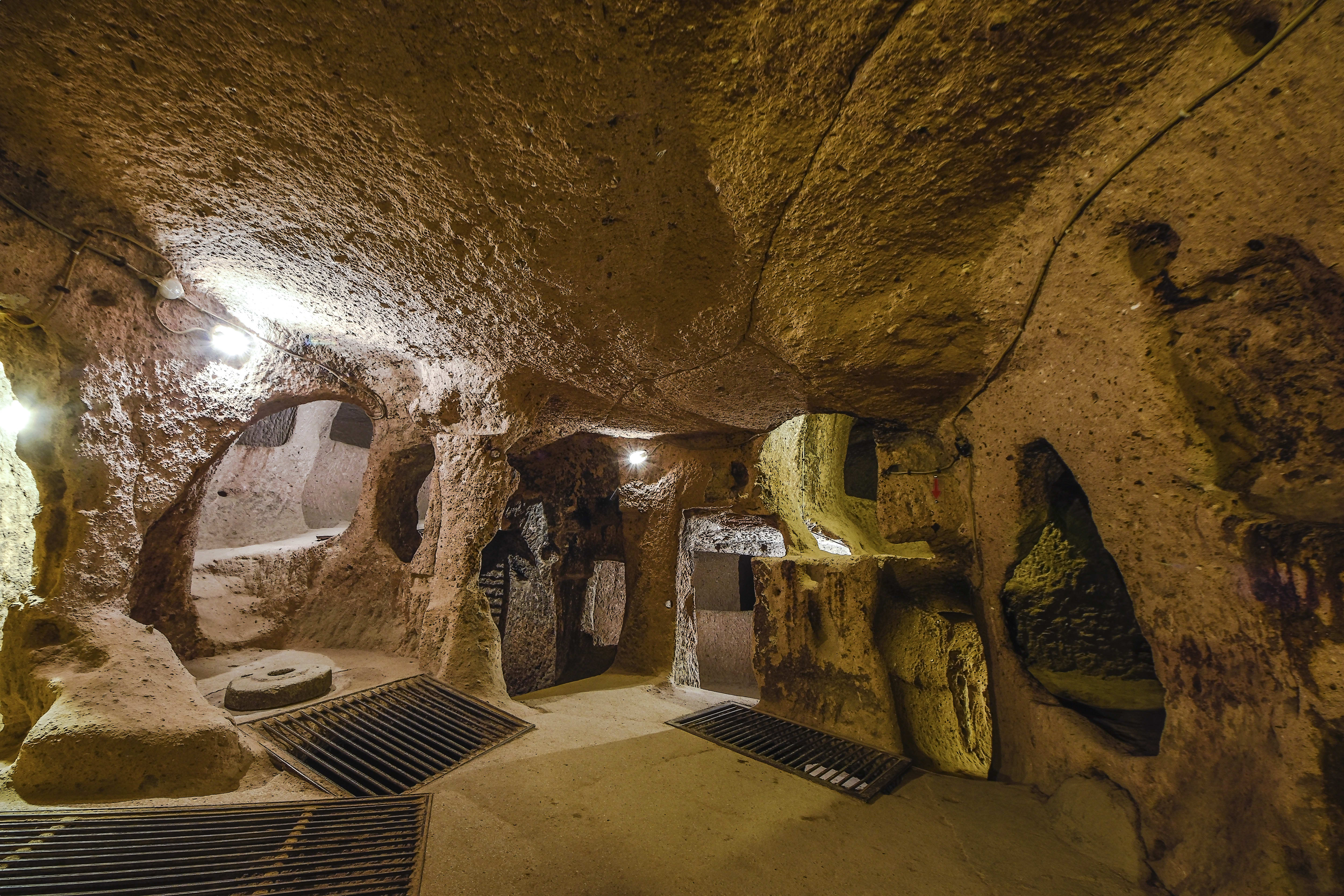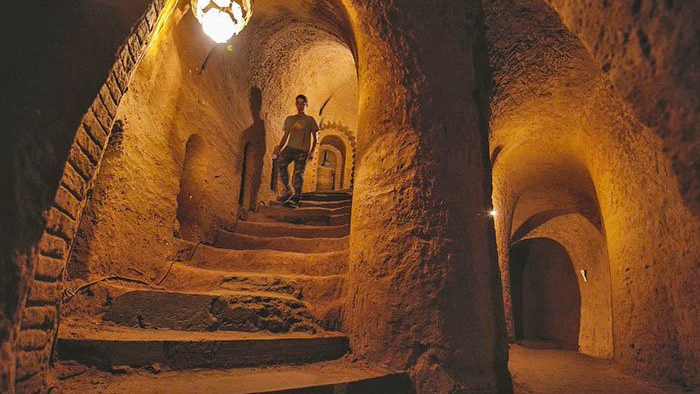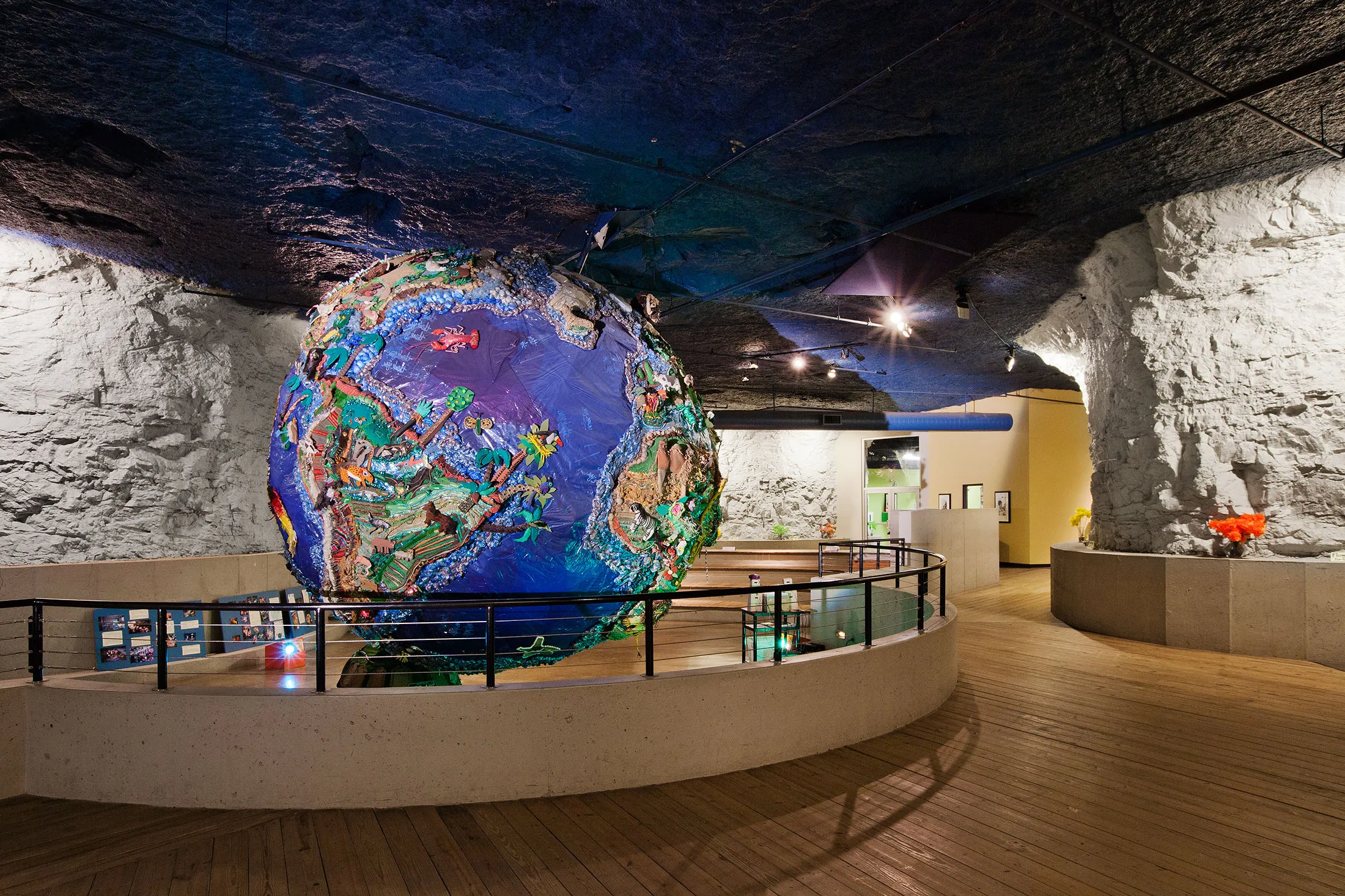Throughout history and even today, humans have built entire cities beneath the ground level. These underground cities served various purposes such as shelter from invasions, extreme weather, or nuclear fallout, as well as maximizing urban space. Read along to know more about seven remarkable underground cities around the world, showcasing their history, purpose, and unique features.
7 Cities Entirely Built Underground Cities
| City | Location | Approximate Size/Capacity | Primary Purpose | Historical or Modern |
| Derinkuyu | Cappadocia, Turkey | Sheltered up to 20,000 people | Refuge from invasion and conflict | Ancient |
| Nushabad | Near Kashan, Iran | Several underground levels | Refuge during attacks and harsh weather | Ancient |
| Naours | Northern France | ~300 rooms, 28 galleries | Shelter during wars | Medieval/WWII |
| Orvieto | Orvieto, Italy | ~1,200 tunnels and rooms | Storage, bomb shelter | Ancient/WWII |
| Dixia Cheng | Beijing, China | Covers 85 sq km, shelters 1 million | Nuclear fallout shelter | Cold War Era (1960s) |
| SubTropolis | Kansas City, USA | 5 million sq ft | Business complex | Modern |
| Crystal City | Arlington, Virginia, USA | Millions of sq ft | Commercial & residential complex | Modern |
1. Derinkuyu, Cappadocia, Turkey

Source: Odyssey Traveller
Derinkuyu is possibly the best-known ancient underground city. Situated in Cappadocia, this huge complex of tunnels and chambers extends 60 meters underground and was capable of sheltering as many as 20,000 individuals.
Constructed sometime during the 8th century BCE, it comprised living space, kitchens, oil and wine presses, stables, chapels, and air shafts. The complex served as a safe haven from invasion and wars for centuries.
2. Nushabad, Iran

Source: Travel to Iran
Nushabad is an underground city close to Kashan in Iran, going a number of levels below the ground surface. It was built to shield people in instances of attack and extreme weather conditions.
The underground city has thin corridors, warehouses, reservoirs for water, and emergency exit tunnels. It's a historical model of Persian creativity in underground city planning.
3. Naours, France
Source: Atlas Obscura
Naours is located in northern France and goes back to the Middle Ages, converted from a big chalk quarry. It has approximately 300 rooms and 28 chambers that had the potential to accommodate up to 3,000 individuals during times of war.
Naours was utilized as a shelter during the Thirty Years' War and even during World War II. Naours featured living spaces, wells, chapels, and ventilation pipes.
4. Orvieto, Italy

Source: Lonely Planet
Partially constructed underground, Orvieto's underground network features around 1,200 tunnels and rooms excavated below a volcanic rock hill. Initially developed by the Etruscans, it was employed for the storage of food and wine, and subsequently as a bomb shelter when World War II occurred. Today, tourists are able to tour a section of these vast underground areas.
5. Dixia Cheng (Underground City), Beijing, China
Source: Atlas Obscura
Constructed in the 1960s as a nuclear fallout bunker, Beijing's Dixia Cheng has an estimated 85 square kilometers of underground space.
It would have housed a million or more for months with facilities including hospitals, schools, restaurants, granaries, and recreational areas. Although never employed for its purpose, it is a relic of Cold War civil defense planning.
6. SubTropolis, Kansas City, USA

Source: Bloomberg
SubTropolis is the world's largest man-made underground business complex. It was excavated from a limestone mine outside Kansas City, Missouri. It covers more than 5 million square feet and contains warehouses, offices, manufacturing plants, and data centers. The underground site offers natural climate control and security.
7. Crystal City, Arlington, Virginia, USA
Source: Washingtonian
Situated just outside of Washington, D.C., Crystal City is a contemporary underground city system that links office towers, hotels, apartments, stores, and restaurants with an interconnecting tunnel network of underground concourses.
Tunnels interconnect millions of square feet of commercial and residential space, protecting residents and employees year-round from the weather.
From ancient refuges to state-of-the-art commercial hubs, the underground continues to be a vital space for habitation and activity.
Comments
All Comments (0)
Join the conversation